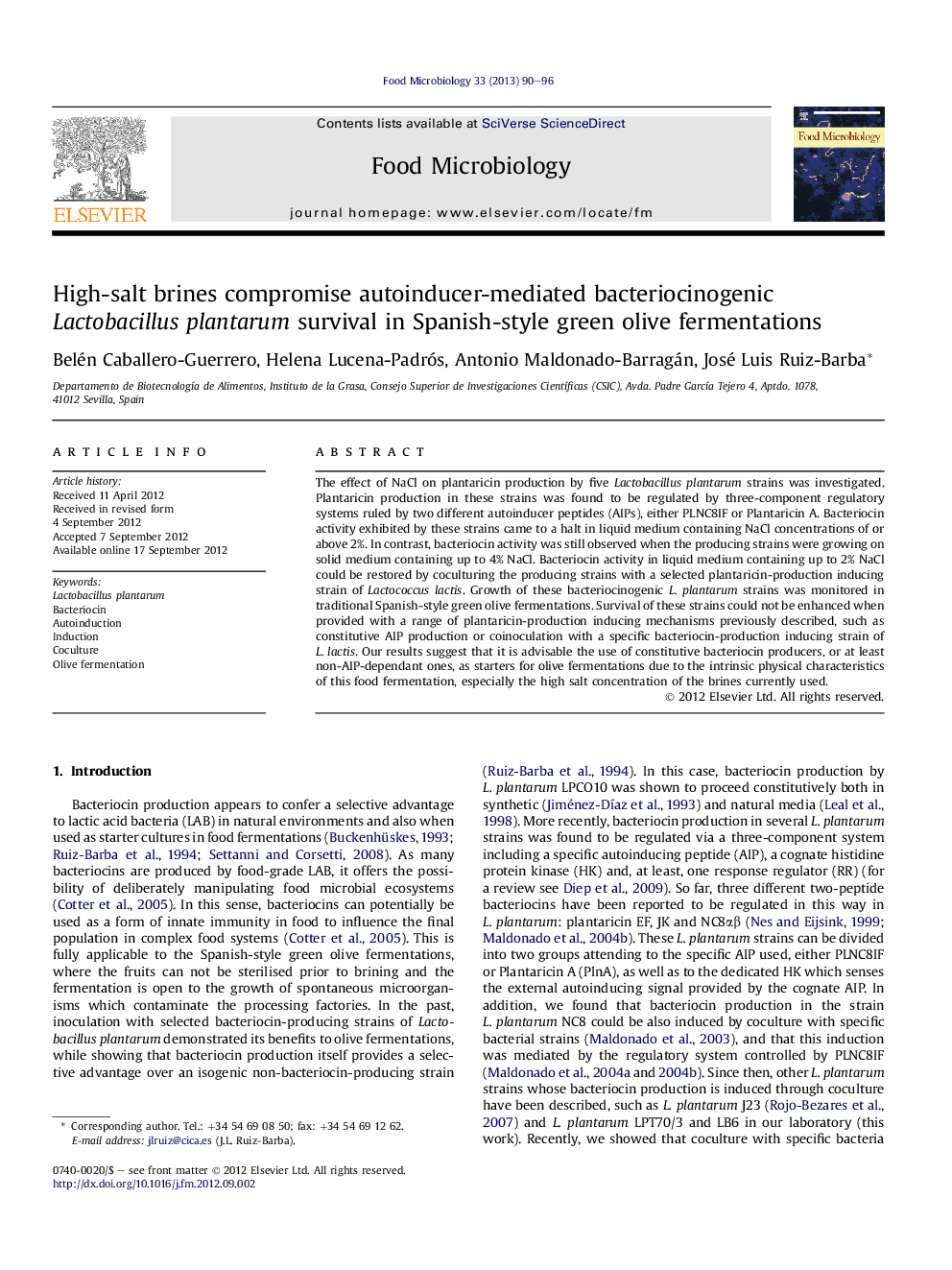| Article ID | Journal | Published Year | Pages | File Type |
|---|---|---|---|---|
| 4362978 | Food Microbiology | 2013 | 7 Pages |
The effect of NaCl on plantaricin production by five Lactobacillus plantarum strains was investigated. Plantaricin production in these strains was found to be regulated by three-component regulatory systems ruled by two different autoinducer peptides (AIPs), either PLNC8IF or Plantaricin A. Bacteriocin activity exhibited by these strains came to a halt in liquid medium containing NaCl concentrations of or above 2%. In contrast, bacteriocin activity was still observed when the producing strains were growing on solid medium containing up to 4% NaCl. Bacteriocin activity in liquid medium containing up to 2% NaCl could be restored by coculturing the producing strains with a selected plantaricin-production inducing strain of Lactococcus lactis. Growth of these bacteriocinogenic L. plantarum strains was monitored in traditional Spanish-style green olive fermentations. Survival of these strains could not be enhanced when provided with a range of plantaricin-production inducing mechanisms previously described, such as constitutive AIP production or coinoculation with a specific bacteriocin-production inducing strain of L. lactis. Our results suggest that it is advisable the use of constitutive bacteriocin producers, or at least non-AIP-dependant ones, as starters for olive fermentations due to the intrinsic physical characteristics of this food fermentation, especially the high salt concentration of the brines currently used.
► AIP-mediated bacteriocin production in Lactobacillus plantarum is not affected by salt in plates. ► AIP-mediated bacteriocin production in L. plantarum is affected by salt in broths. ► Coculture is the best method to induce bacteriocin production in salt-containing broths. ► Recommended non-AIP-dependant bacteriocin producers in olive fermentations.
